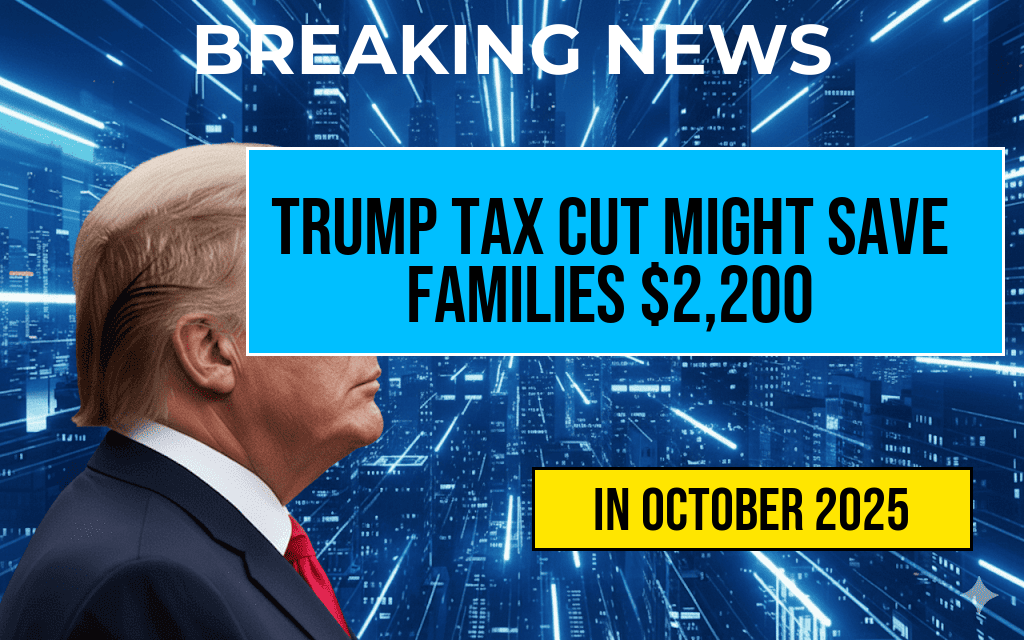The recent analysis by The Washington Post reveals that while President Trump’s signature tax cut was not the largest in U.S. history, it still delivered significant benefits for American families. Notably, families could see savings of up to $2,200 per child annually, depending on their income level and family size. This figure underscores the tangible impact of the tax reform on household budgets, especially for middle-income households. The analysis also emphasizes that the tax cuts favored higher earners in certain areas, but the enhancements to child-related credits and deductions meant direct relief for parents. As policymakers debate the future of tax legislation, understanding the nuanced benefits helps contextualize the broader economic implications of the measure and its real-world effects on family finances.
Breaking Down the Tax Cut’s Impact on Families
What the Tax Cuts Entail
The 2017 Tax Cuts and Jobs Act (TCJA) implemented a series of changes aimed at reducing tax burdens for individuals and businesses. While critics argued that the measure primarily benefited the wealthy and corporations, supporters pointed to increased take-home pay and expanded credits for families. Key provisions included lowering the corporate tax rate from 35% to 21%, doubling the standard deduction, and increasing the child tax credit. These adjustments collectively reshaped the fiscal landscape for millions of Americans, but their actual benefit varied depending on income and family makeup.
Estimated Savings for Families
| Income Bracket | Average Savings per Child | Maximum Possible Savings |
|---|---|---|
| Under $75,000 | $1,200 | $2,200 |
| $75,000–$150,000 | $1,500 | $2,200 |
| Over $150,000 | $800 | $1,200 |
According to the analysis, families earning less than $75,000 annually could see roughly $1,200 in savings per child, while higher-income families earning between $75,000 and $150,000 might experience benefits closer to $1,500. The maximum potential savings reaching up to $2,200 per child primarily benefit middle- and upper-middle-class households, largely due to the expanded child tax credit and related deductions.
How the Tax Cuts Affect Different Income Groups
Middle-Income Families
Middle-income households, often balancing multiple expenses such as housing, education, and healthcare, found relief through increased child credits and a higher standard deduction. The expanded child tax credit, which increased from $1,000 to $2,000 per child, provided direct financial support, especially for families with children under age 17. These families could see a substantial reduction in their overall tax liability, translating into more disposable income.
Higher-Income Households
While wealthier families benefited from the broader tax cuts, their savings were often driven more by reduced rates on investment income and business income rather than direct child-related credits. However, some high earners could still realize significant savings, particularly through deductions related to mortgage interest and state and local taxes, which remained capped under the new law.
Controversies and Political Debate
Claims of Favoritism
Critics contend that the tax reform disproportionately favored corporations and the wealthy, with many middle- and lower-income families seeing only modest gains. The Congressional Budget Office estimated that the law would add approximately $1.9 trillion to the federal deficit over a decade, raising concerns about future fiscal stability.
Supporters’ Perspective
Proponents argue that the tax cuts spurred economic growth, increased employment, and lifted wages for many workers. They emphasize the direct benefits families received from expanded child credits and the reduction in marginal tax rates, which they say helped stimulate consumer spending and investment.
Looking Ahead: Policy Implications
As debates continue on how to reform tax policies, the detailed analysis of actual family savings provides valuable insight into what has been achieved and what still needs addressing. Many experts suggest that targeted measures, such as enhancing child benefits or expanding credits further, could better support working families without significantly increasing the deficit.
For more detailed information on the tax law and its economic implications, see the Wikipedia entry on the Tax Cuts and Jobs Act of 2017 and Forbes coverage of recent analyses.
Frequently Asked Questions
What is the main focus of the WaPo analysis regarding Trump’s tax cut?
The analysis examines how the Trump tax cut impacts families, highlighting that while it may not be the largest tax cut, families could still save up to $2,200 per child.
How much could families potentially save per child under the new tax policies?
Families could see savings of up to $2,200 per child, providing significant financial relief for many households.
Is the Trump tax cut the largest in history according to the analysis?
No, the analysis indicates that it is not the largest tax cut in history, but it still offers notable benefits for families with children.
Which families are most likely to benefit from the tax cut?
Families with children are expected to benefit the most, especially those who will experience the maximum $2,200 savings per child.
What are the potential implications of the tax cut for families’ financial wellbeing?
The tax cut could provide substantial financial relief, helping families cover costs related to childcare, education, and other expenses, thereby improving their overall financial wellbeing.

Leave a Reply